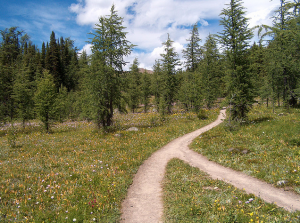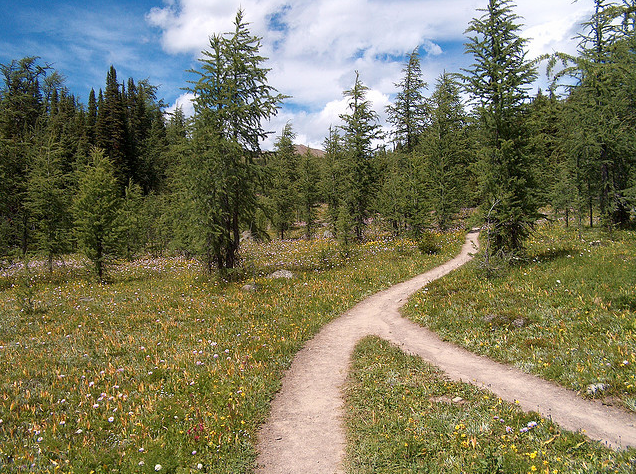How to Grow Your Relationship to Real Food
In my last article, Nature vs. Nutritionism’s False Hope, I said that not only does nutritionism not work as a food guidance system, following it as the savior to our dietary problems actually leads us away from the one and only thing that can put us on the right path of eating – and that is establishing a healthy relationship with real food.
But how do we develop such a relationship?
For decades I have grappled with the questions of what is it that “switches on” or exists in a person that gives them the desire to live healthfully in the first place, and then what must remain present to continually fuel that desire. While I realize this is a complex issue with no pat answer, I have come to believe there are certain essential components that catalyze the creation of a healthy relationship with real food.
When it comes to food, in order to have an effective, easeful self-guided system to live by, we must have the realization that as human beings, our bodies are connected with the earth and rely on the food that comes from it. Additionally, we need to develop a respect for the miracle of our body, one that not only acknowledges that it’s not separate from Nature or the laws under which it conforms, but includes the desire to love, take care of our body and not violate or abuse its natural integrity.
Therefore to thrive, we are led to eat real food from nature, when available, rather than a diet of factory processed and fast food. (In fact seeing these choices as non foods becomes integral). This may sound so obvious that it hardly warrants writing about, but discovering (let alone following) its wisdom is not so easy to come by these days; if it were we wouldn’t be in the miserable shape we’re in!
 The answer lies within the alchemy of the word relationship and I feel this is the missing ingredient for countless Americans.
The answer lies within the alchemy of the word relationship and I feel this is the missing ingredient for countless Americans.
There are two basic pathways that birth and cultivate a relationship with real food, and they augment each other. I categorize one as the external way, and the other as the internal. These two pathways eventually converge, creating the larger “journey-road” of healthy eating and a lifestyle for wellness.
The external path is reliant upon exposure and education. Which foods we are given growing up have a strong influence on establishing our overall diet-style. While I don’t think we are limited to the scope of our childhood foods or preferences, regular gentle exposure to natural foods from an early age can only help set the stage for further awareness to seed and germinate. Healthy exposure from friends and extended family counts as well.
NOTE: If you are an adult or have an adolescent child who hasn’t been eating a steady diet of real foods yet, don’t despair and think that it’s too late. It’s never too late! Just realize that your /their taste buds will need to go through an adjustment period. As a result of our food manufactured society, our mouths have typically become conditioned to want, enjoy, and expect our foods to taste over salted, sugared, and fatty. Once you have weaned off these foods as your regular mainstay, going back to them is astounding – you’ll feel and taste the shocking difference.
Education is a tricky term because here I am NOT speaking of learning through our mainstream nutritional education such as the current MyPlate protocol. Instead, I mean alternative sources that grow our awareness and understanding of what real food is in a deeper relational way. These sources have come mostly (but not exclusively) from food books, cookbooks and holistic food systems outside the mainstream. They integrate the sensibility of connection to the earth with eating fresh whole foods in harmony with the seasons, as well as developing a relationship with the food one prepares through the intimate act of cooking and paying attention to their qualities.
The internal path brings you inside your body and then connects you to the world outside – to the cycle of seasons, the larger rhythms of the earth and hence, to life itself. This is visceral. Consequently, you develop a respect for the interdependence of life. There are various ways for this to be cultivated and some examples are: organic gardening, spending regular time out of doors- in parks or nature, through an introspective body-mind practice such as Yoga or Tai Chi – where you develop a natural reverence for the vehicle of your body – or the miracle of pregnancy and childbirth.
Remember that the external and internal paths intersect and inform each other, and one kind of awareness begets another. They are process oriented and grow over time. My own path to healthy eating and living is illustrative: I fell in love with organic gardening in my early 20’s, began Yoga when I was 24, was then exposed to other students who ate vegetarian foods, took a vegetarian cooking class, started reading lots of food and alternative cooking books, continued organic gardening and practicing Yoga, and developed a relationship to food through growing and cooking it… and within months the new pattern was taking root.
Looking back, I now appreciate that what I was benefiting from was a deeply effective kind of cross training between these two paths. Increasingly, such pathways need to be integrated into school programs for our children’s sake – another article! One thing is for certain, the way back to Eden is not through our current disconnected, disembodied way of living, eating, and being educated by our government.
________________________________________
Photo credit: brilang, used with permission under Creative Commons license.

